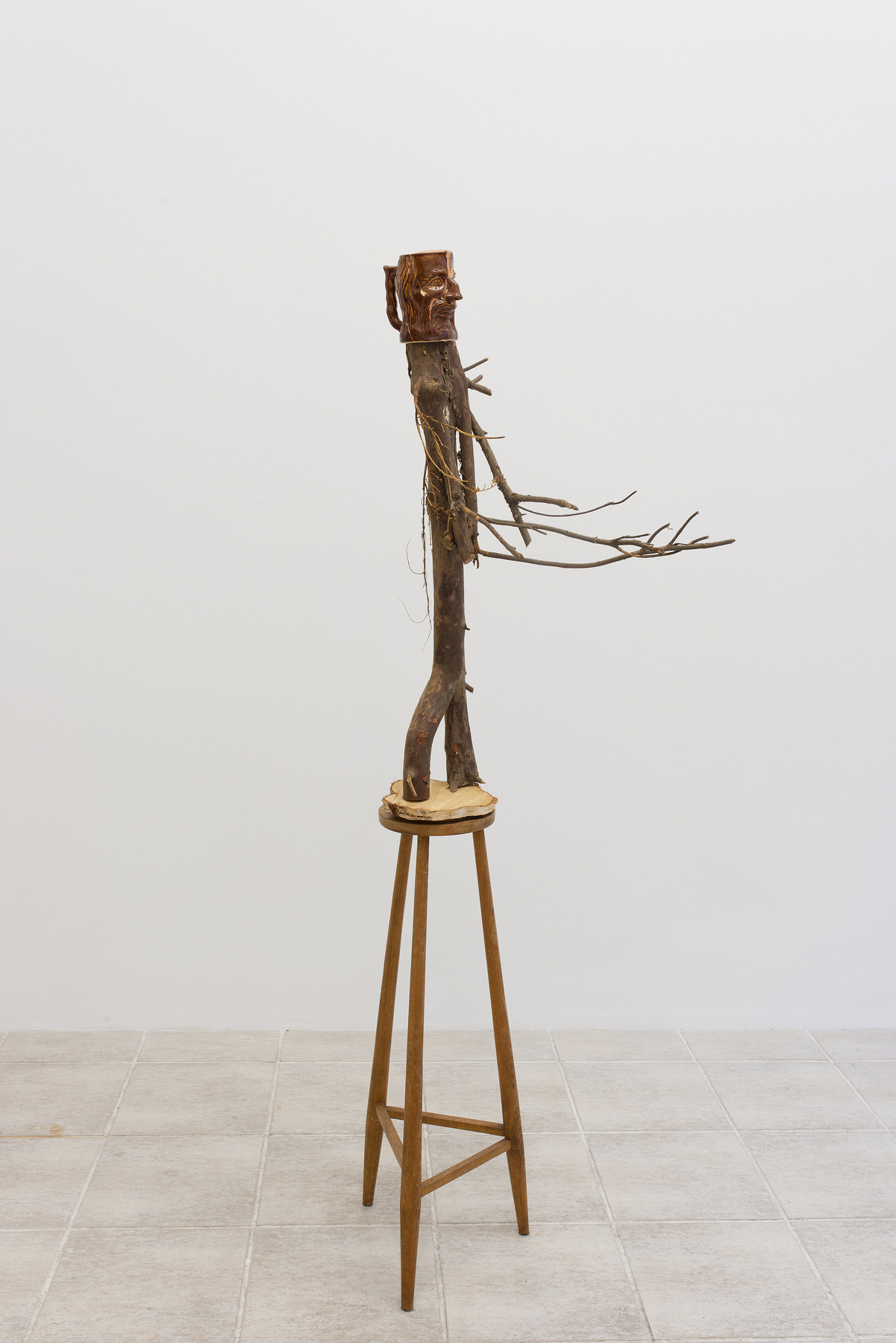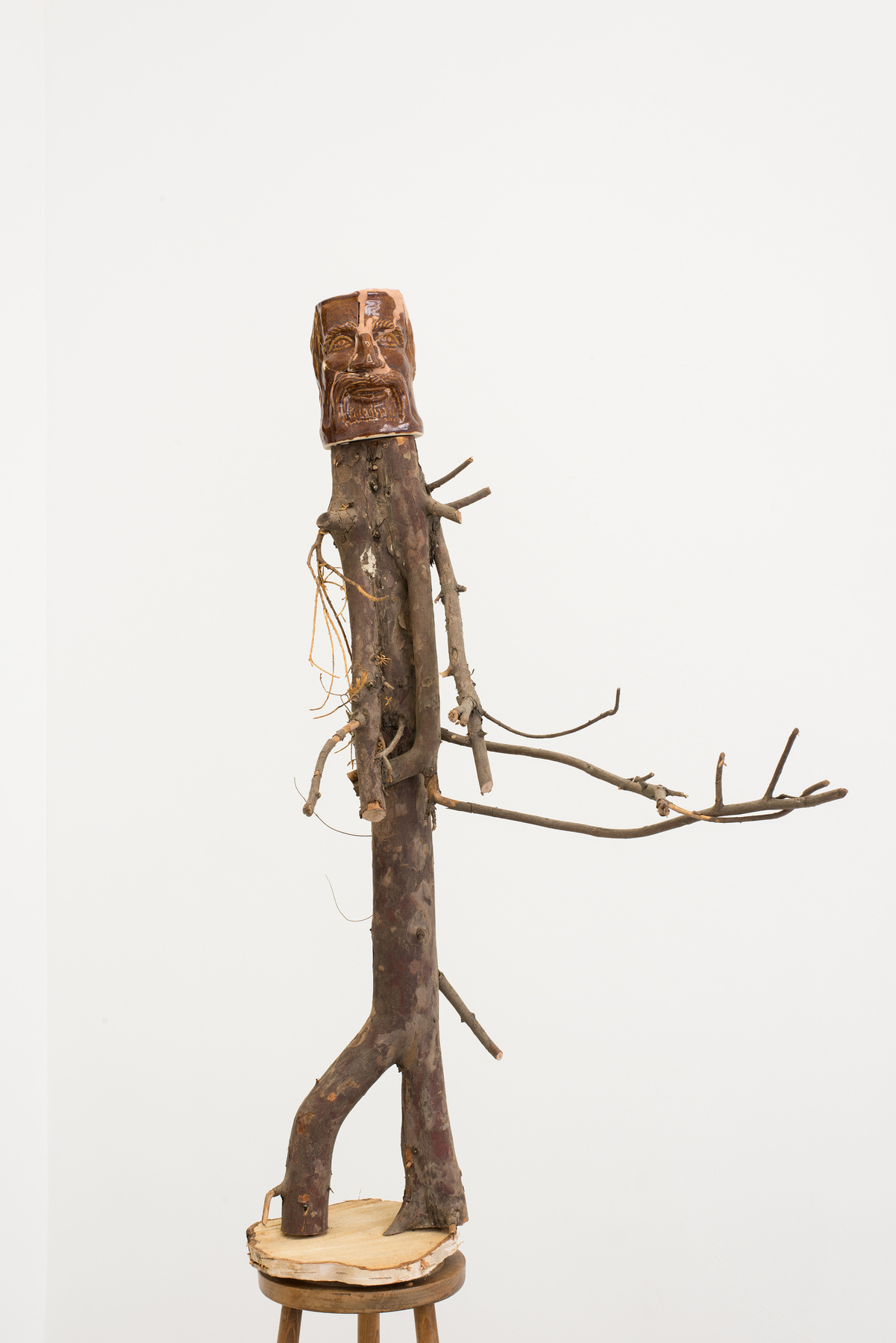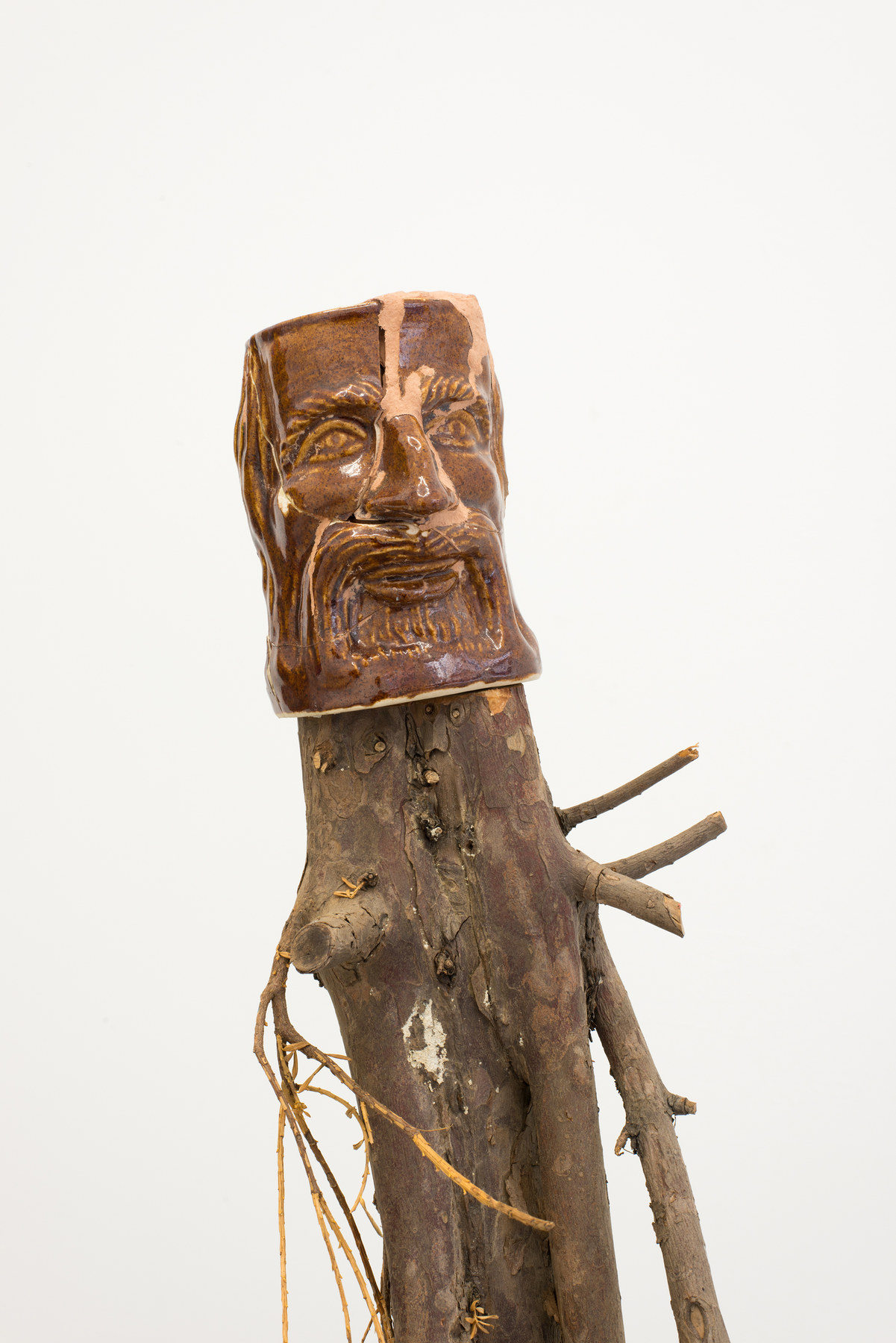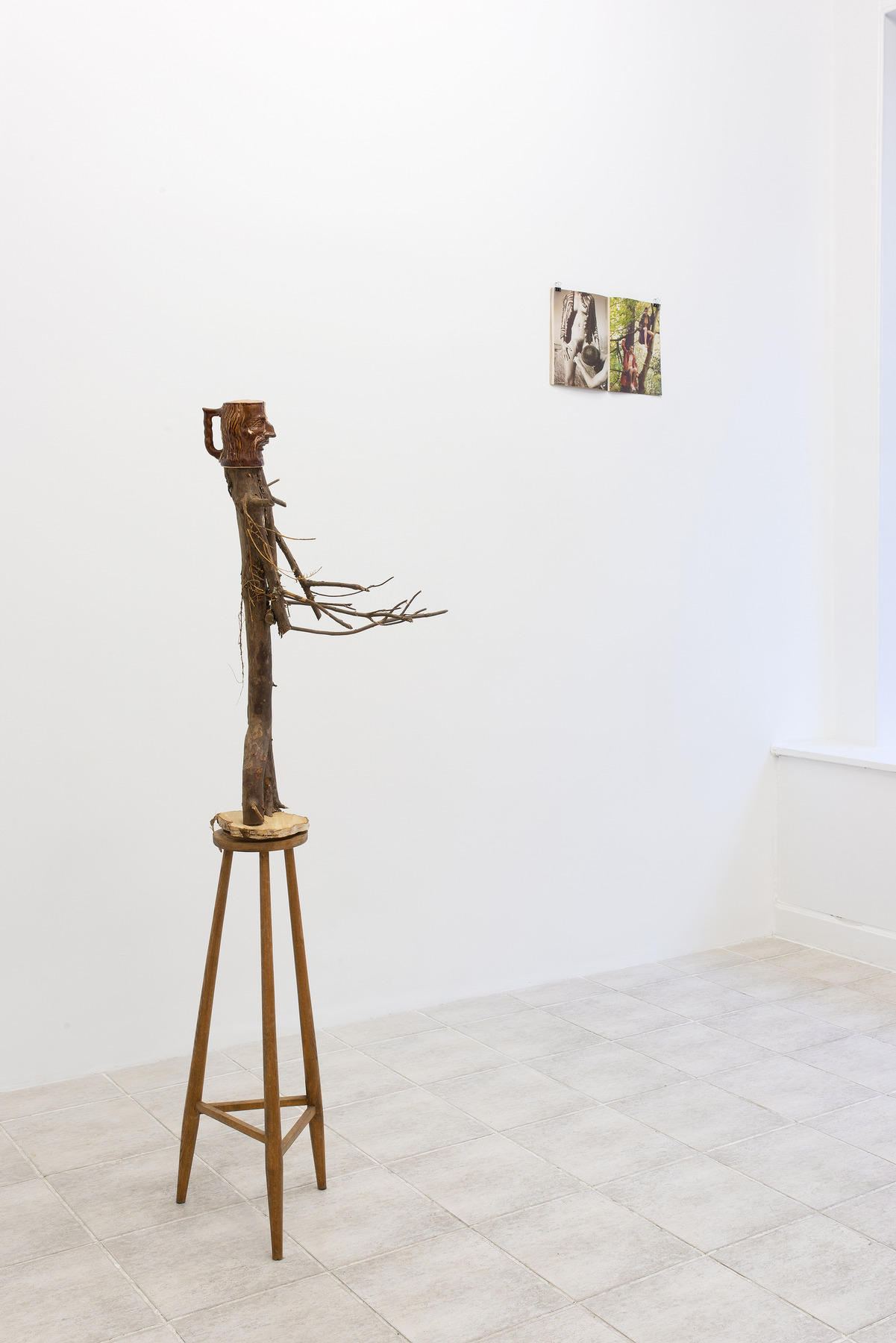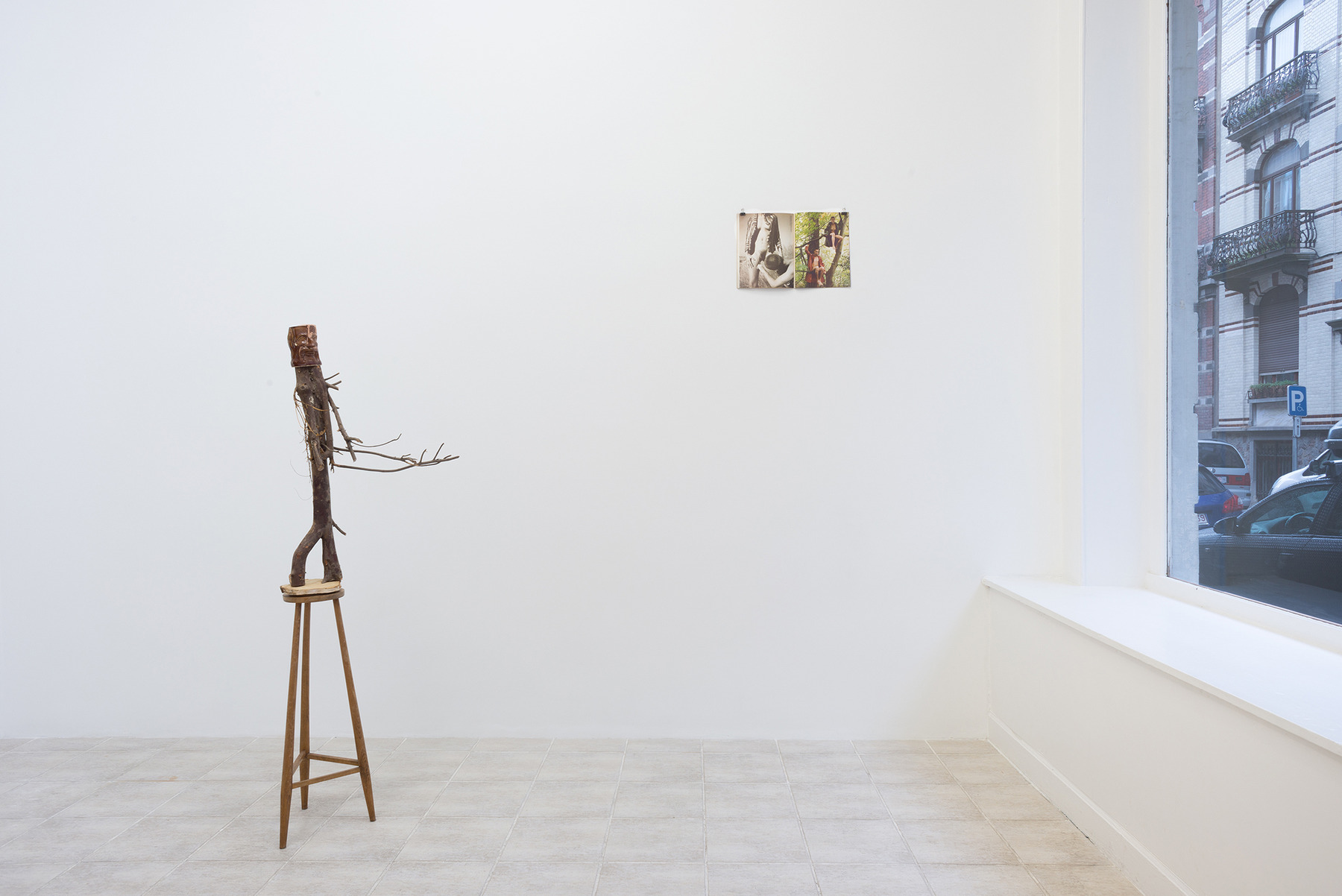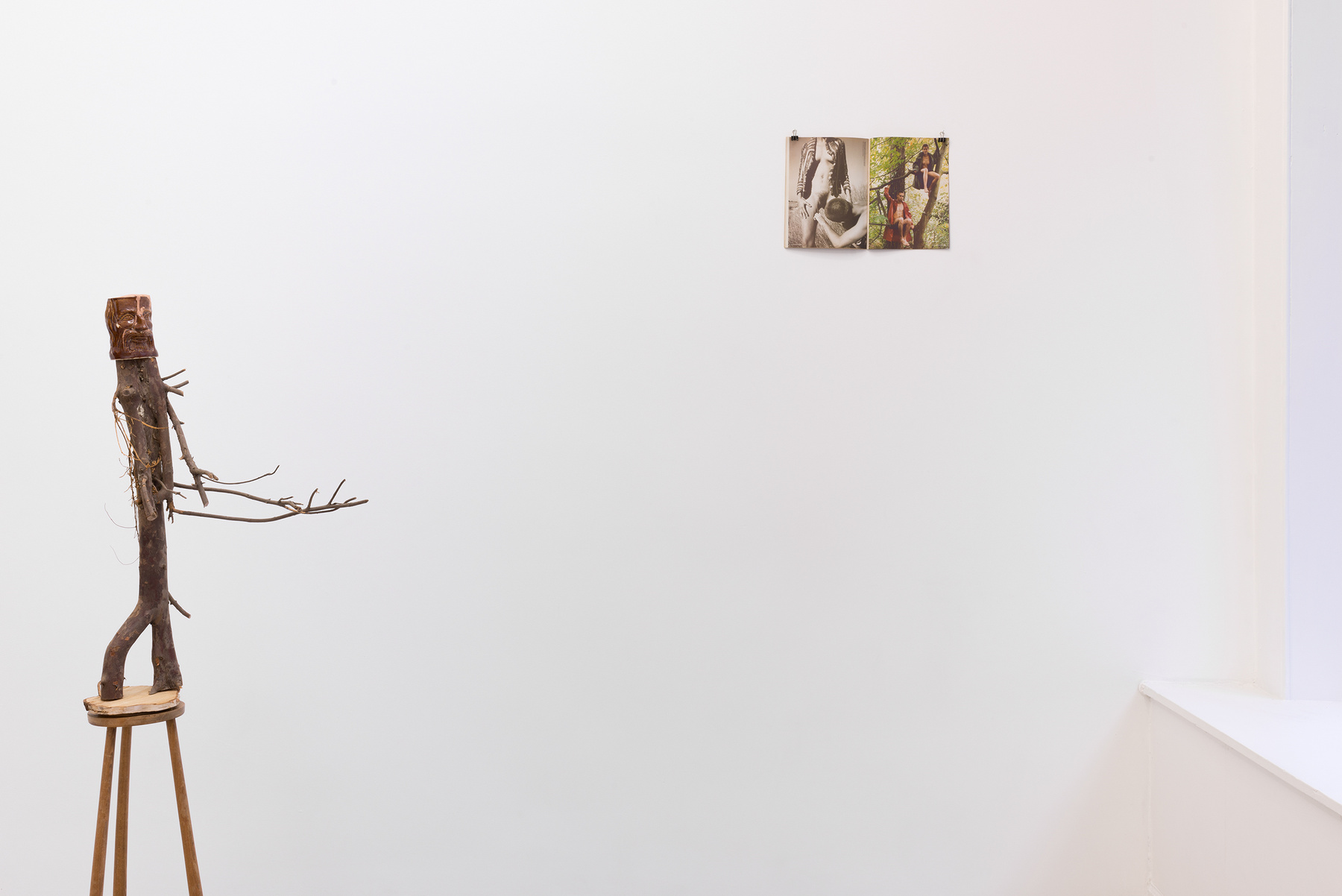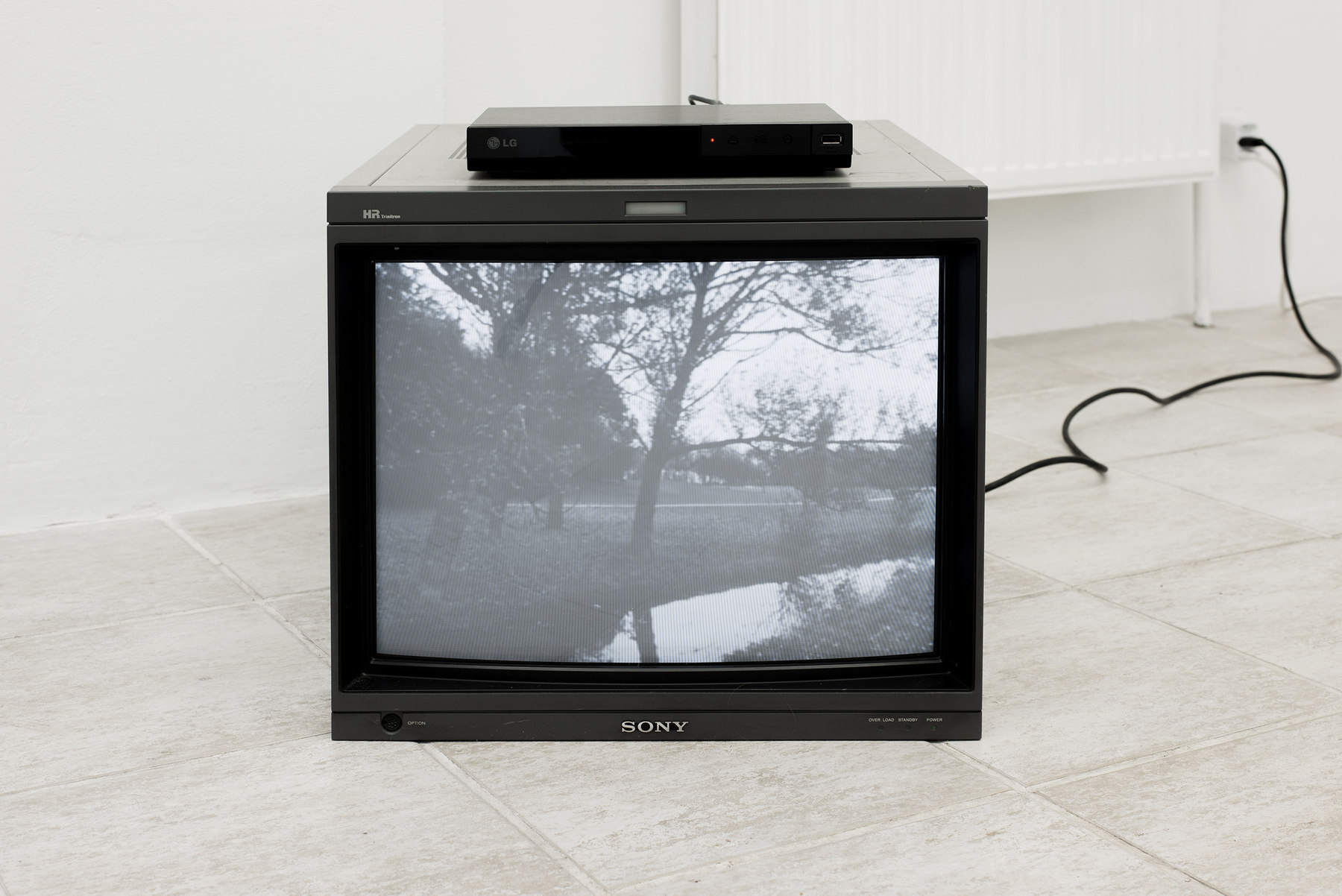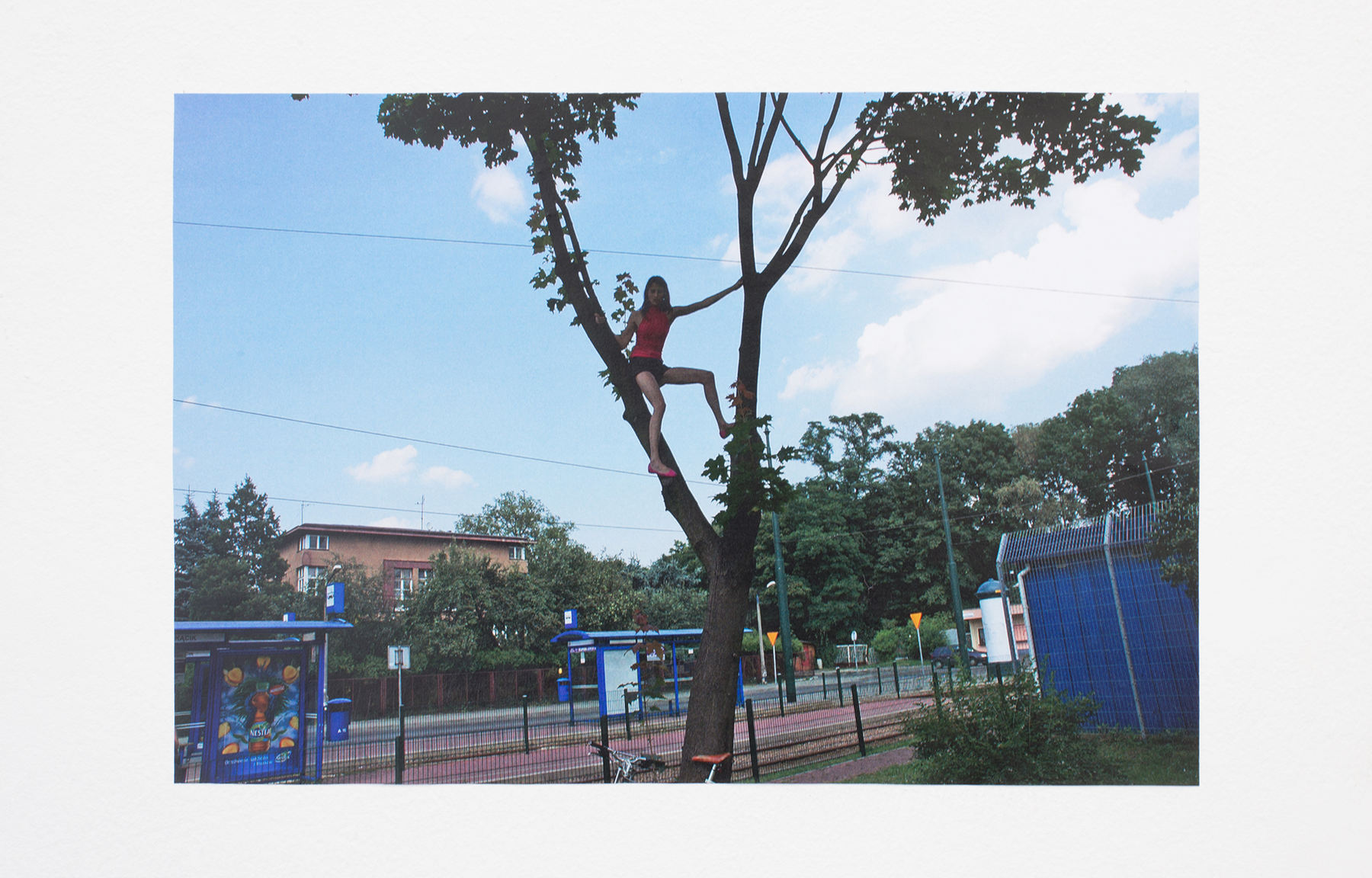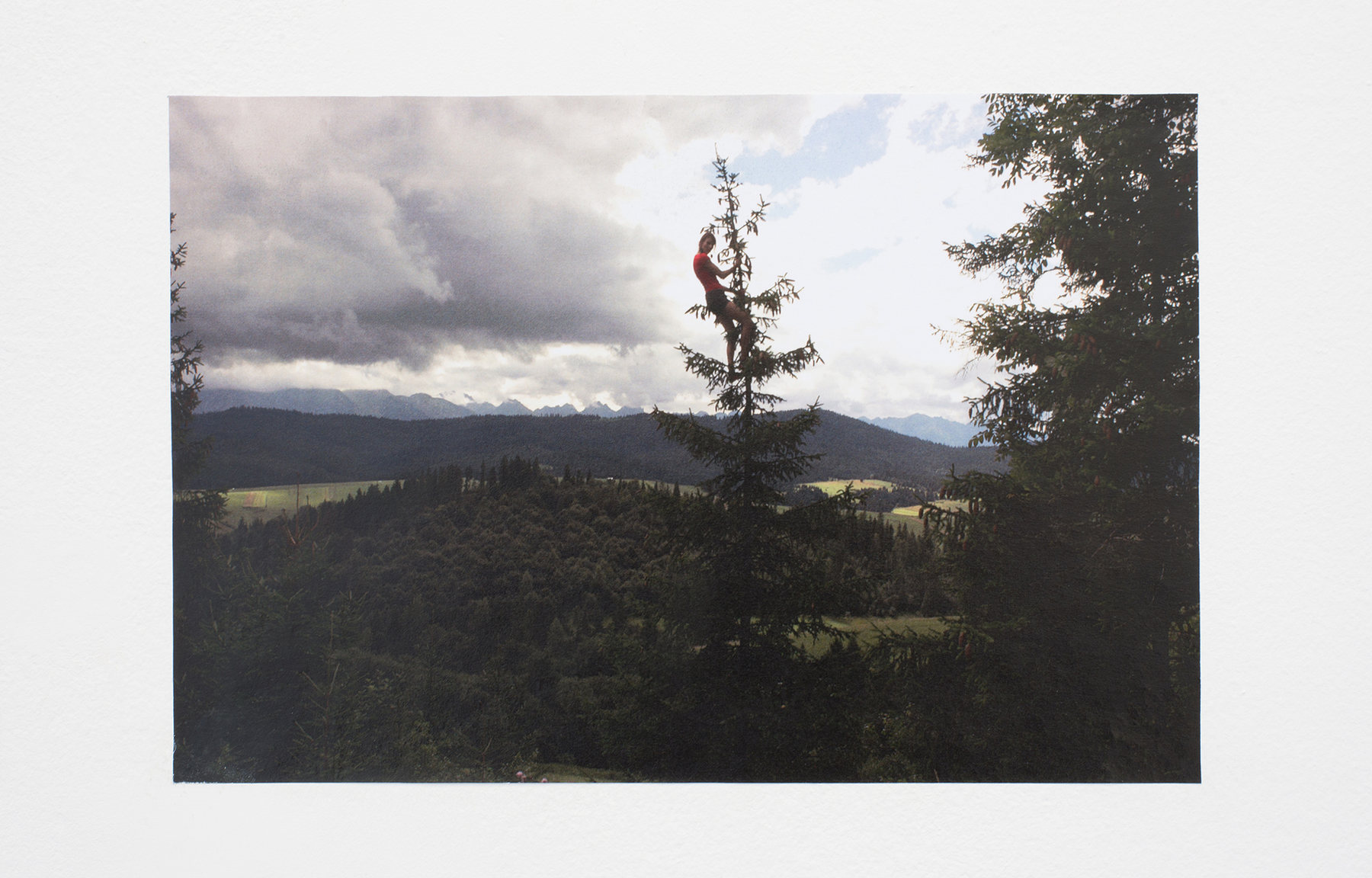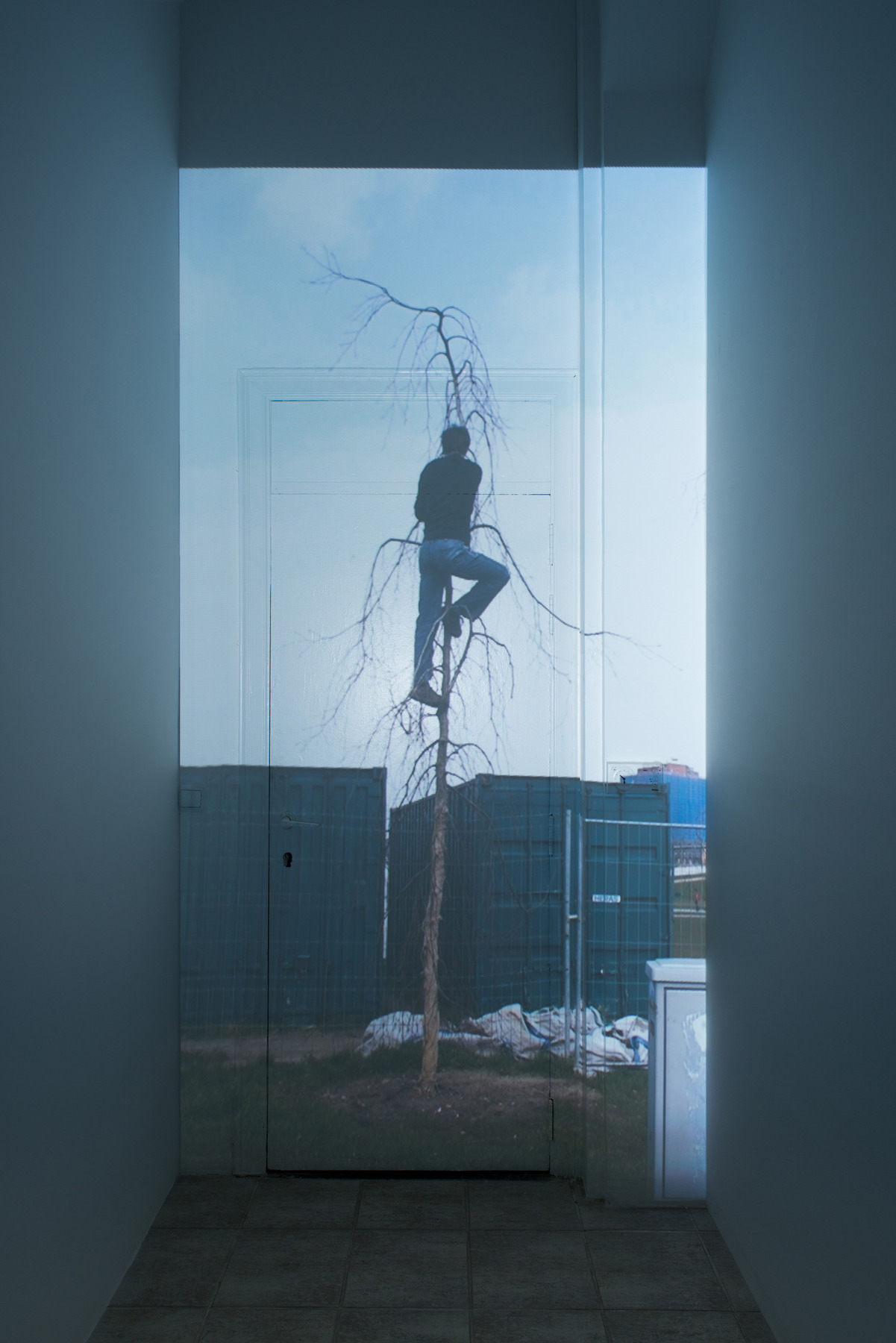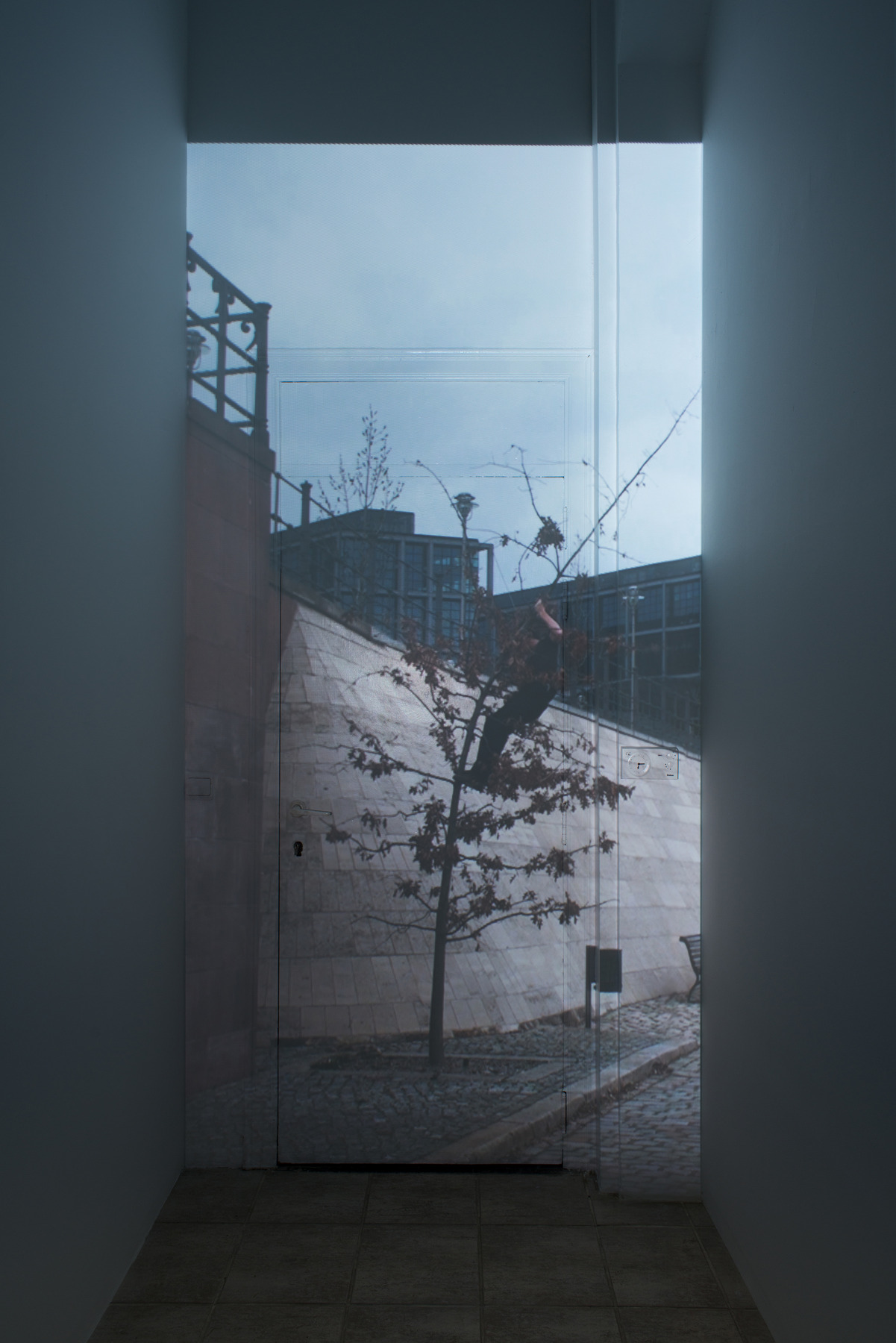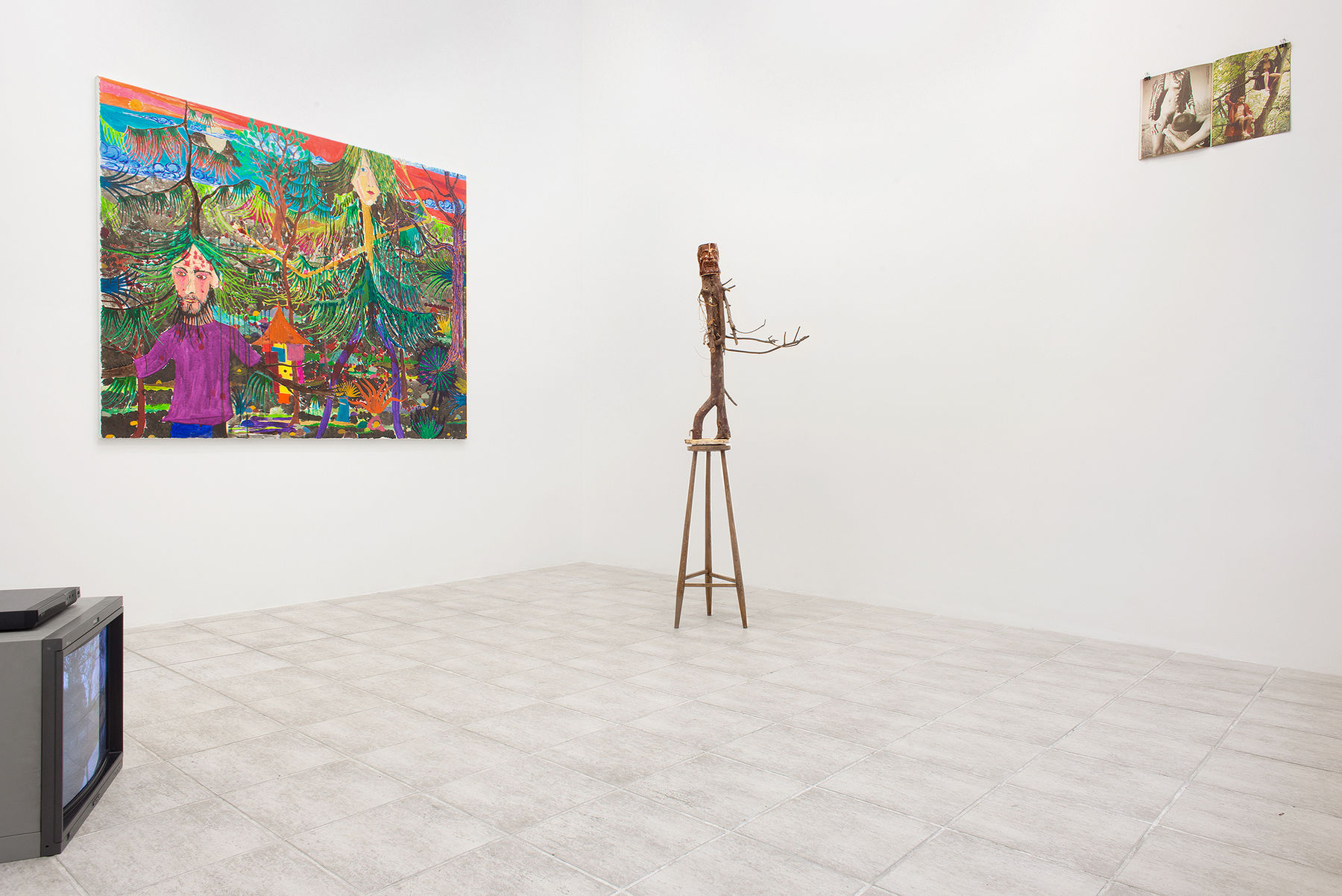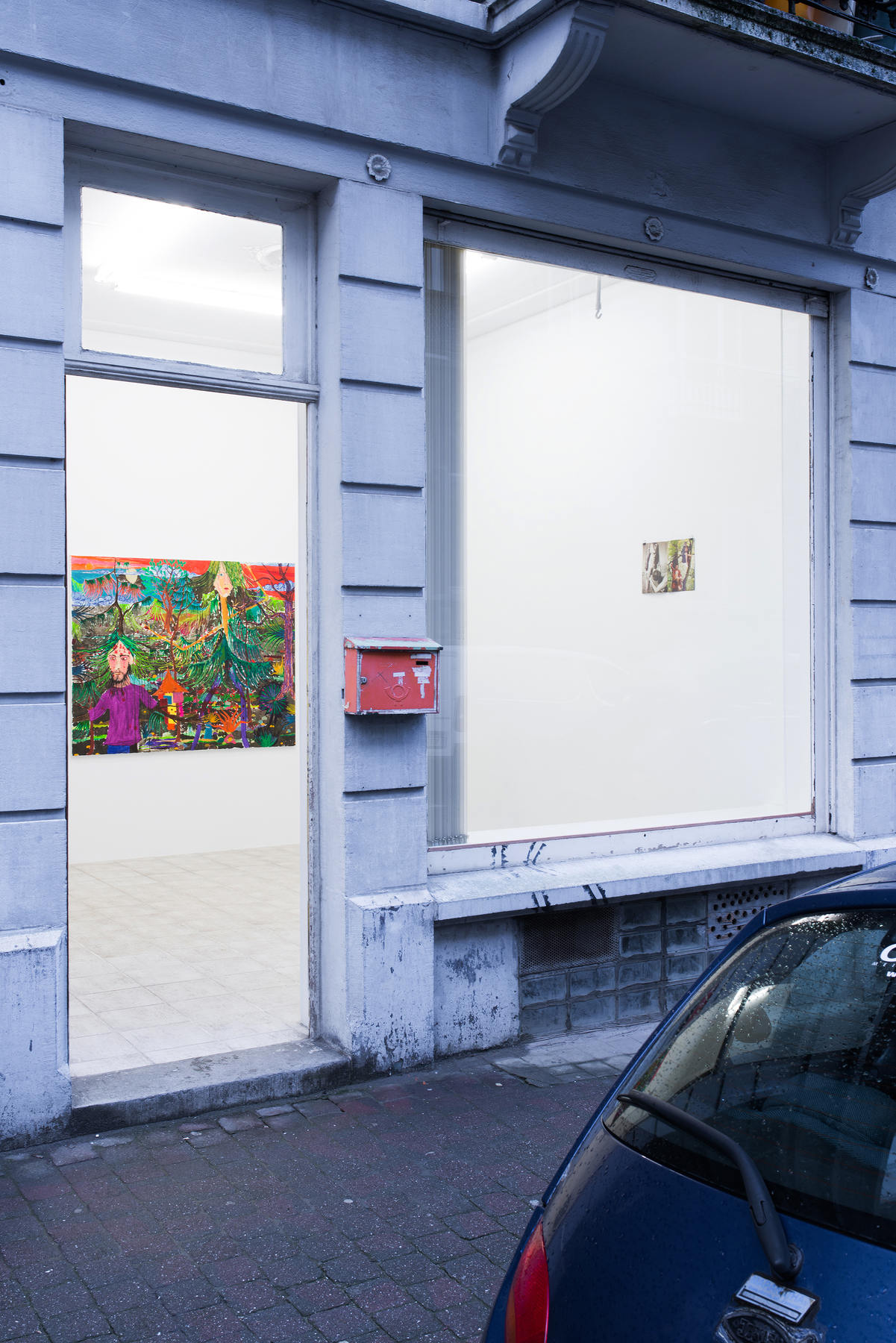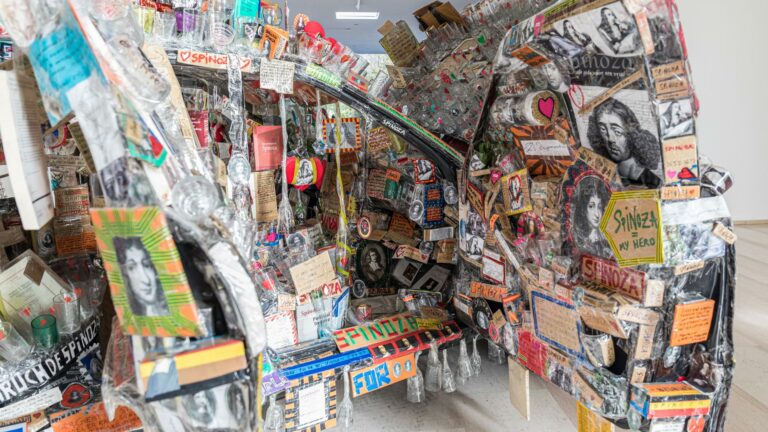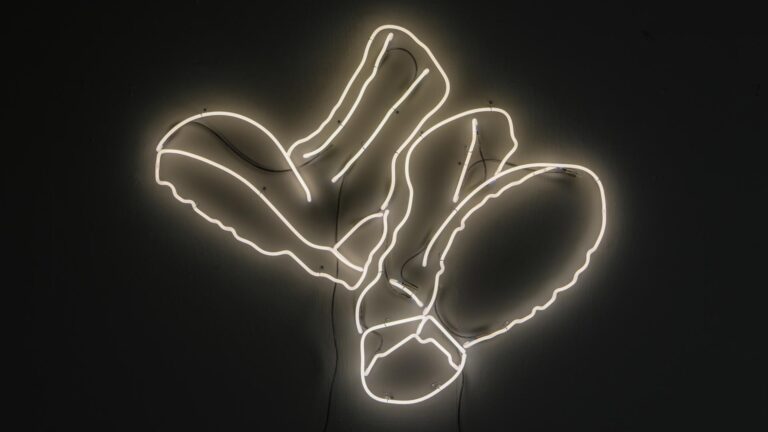Artists: Bas Jan Ader, Abel Auer, Cecylia Malik, Sebastian Stumpf, Wolfgang Tillmans
Exhibition title: PEOPLE IN TREES
Venue: SALOON, Brussels, Belgium
Date: September 8 – 24, 2017
Photography: Lola Pertsowsky, all images copyright and courtesy of the artists and SALOON, Brussels
Note: List of works can be found here
SALOON is delighted to present its first group exhibition. ‘PEOPLE IN TREES‘ includes works by Bas Jan Ader, Abel Auer, Cecylia Malik, Sebastian Stumpf and Wolfgang Tillmans, in which the artists literally deal with the image of people in trees. The act of climbing a tree and the tree as an object of longing fascination for human beings seems a familiar metaphor but articulates a contemporary urge as well. From a search for freedom, the escape into a temporary paradise, a rebellious environmental engagement, a travel into our dark fantasies, or the existential exercise in failure, the show lights out different visions of this symbolic and yet still inspiring imagery.
The practice of Dutch artist Bas Jan Ader (1942 – disappeared 1975), is most frequently explored through his film work, much of which consists of variations on a theme of the artist falling through space. As such, the work has often been discussed in relationship to the concept of failure (…).‘* Ader‘s close friend and collaborator William Leavitt writes: „As well as his desire for concrete truth, he had a corresponding attraction to the imperfect, the broken, the mistaken and the misunderstood.“ In one of his iconic videoworks Broken Fall (organic), 1971, we see Ader hanging on long branch of a tree upon a small river. Even his skinny arms look already painfully stretched, his presence is as silent and peaceful as the whole scenery. He, as well as the beholder, know that he will fall, either if his power will be gone or if he decides to let loose before. Ader created a dead end road for himself executing his own decision. But when he finally lets loose the tree we understand that he is not failing, but takes instead the freedom to fall.
The works of German artist Abel Auer (1974) appear like psychedelic visions blurring the boundaries between abstraction and figuration, between reality and hallucination, seriousness and the grotesque. In his two earlier works Baumfreaks, 2005, and Untitled, 2007, Auer translates the traditional fantastic imagery of the mystic forrest into a contemporary artistic language. His human-tree creatures in Baumfreaks appear in lucid colors like city people who took the wrong road home and woke up as a tree. The ceramic face of his assemblage sculpture Untitled expresses surprises about its own tree-body with its too many arms and legs unusefully twisted. With the other-worldiness of the one who knows, Auer plays with the uncanny German Heimat. He tempts us to join his fantasy while warning that once you step inside you might never return the same way.
For one year Polish artist Cecylia Malik (1975) climbed a tree every day to create her calender of 365 trees, 2009-2010. Each of the images shows herself somewhere climbing, hanging, sitting, hugging, or struggling in a tree. What started on small scale with her daily image posted on Facebook fastly grew into a large group of followers. „I thought this would be my photo diary, like‚ ‘Cecilia every day on another tree‘. It was a way to train my strenght and perseverance, a way to leave town and everyday life. Experiencing the four seasons on my own skin. Throughout the year, I uploaded every day one photo on Facebook. (…) At the beginning of the project I had 80 friends, now I have 1600, they all joined me because of the trees.”** In times of climate change and a growing awareness of the human impact onto nature, her strong personal approach inspires people in its aesthetical and political potential.
German artist Sebastian Stumpf (1980) combines photography and video showing himself as a performer. In most of these precise visual arrangements he links the composition of the image with his own action and sometimes even to the space it is presented in. ‘Stumpf’s appearance before the camera strikes the viewer as both artistic and subversive. An inconspicuous architectural detail suddenly becomes the catalyst for a physical exploit that astonishes, appalls, inspires laughter or troubles us.‘*** While Bas Jan Ader certainly succeeded by deciding to fail, Stumpf instead decided to fail while succeeding. In his work Bäume, 2008, he presents different episodes showing himself climbing thin and fragile trees just strong enough to carry him. Obviously trained in climbing he approaches each tree with high concentration fastly reaching its top before suddenly freezing his move and becoming a new visual part of the tree. During these seconds of hold we understand that reaching the top of a tree is not neccessarily the opposite of falling down. In both directions – up or down – entering a tree is likewise poetical as it becomes surreal.
‘Many critics have misunderstood Wolfgang Tillmans (1968) relationship with magazines, often thinking that he worked as a ‘commercial photographer’ and then became an artist off the back of that. Rather, Tillmans has always been an artist, but used magazines as ways to distribute his work, as he found them an equally valid artistic medium. This non-hierarchy also trickles down into his exhibitions; magazine pages will be shown alongside original photographs. (..) In a lecture at the Royal Academy Arts in 2011 Tillmans explained that the use of different materials and means of reproduction was to “show the equivalents between a hand-printed fine photographic print that I made with my own hands, and a magazine page which has been printed for 30,000 copies, but which had been laid out and designed by me.”‘**** One of the most famous examples of this democratic approach is Tillmans‘ early photograph Lutz and Alex sitting in the trees, 1992. Before it became a single art print it was created as part of a fashion shoot published in i-D Magazine in 1992. For the topic of this ‘sexuality issue‘ young Wolfgang Tillmans asked his friends Alex and Lutz to be his amateur models. Naked and just dressed in raincoates they sit on different branches of a large tree. Alex is sitting higher than Lutz, selfconfidentely smiling into the camera, while Lutz‘ glance seems to be absorbed by the surrounding forest. Tillmans presents the woman upon the man, using the tree as a natural support for his composition. ‘Tillmans is an artist who is fascinated in the relation between the different facets of people’s lives – how people concurrently exist politically, sexually, spiritually, and so on. Tillmans is often reserved when discussing the ‘meaning’ of his works. The nature of his photography encourages the viewer to feel closer to their own experiences by looking at images of others, rather than trying to get inside the vision of the artist. “I want the pictures to be working in both directions,” the artist once said. “I accept that they speak about me, and yet at the same time, I want and expect them to function in terms of the viewer and their experience.”‘*****
* Pilar Tompkins Rivas, in Bas Jan Ader: Suspended Between Laughter and Tears, p.5
** Cecylia Malik on her website (translation)
*** Sebastian Stumpf, artist biography, Gallery Thomas Fischer
**** Your ultimate guide to Wolfgang Tillmans, N IS FOR NON HIERARCHY, in DAZED online
***** Your ultimate guide to Wolfgang Tillmans, S IS FOR SUBCULTURE AND SUBJECTIVITY, in DAZED online



